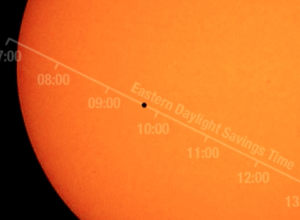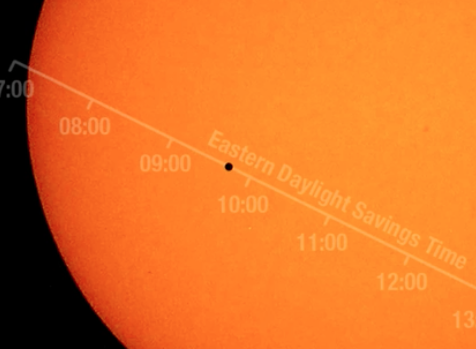
CAPE CANAVERAL, Fla. (AP) — Mercury has begun a relatively rare move across the sun.
The solar-planetary ballet got underway just after 7 a.m. on the east coast with the smallest planet appearing as a tiny black dot on the face of the sun. The transit will last for a total of about 7½ hours. The last time it happened was 2006. It will happen again three years from now, but then not until 2032. NASA says the event occurs only about 13 times a century.
The entirety of Mercury’s journey will be viewable to the eastern U.S. and Canada, as well as most of western Europe and South America.
To catch a glimpse, viewers need binoculars or telescopes with protective solar filters. Mercury’s journey can also be seen via a livestream on NASA’s website .
————–
CAPE CANAVERAL, Fla. (AP) — Mercury makes a relatively rare move across the sun Monday.
Visible just after 7 a.m. on the east coast, the smallest planet will appear as a tiny black dot on the face of the sun, and the transit will last for about 7½ hours. The last time it happened was 2006. It will happen again three years from now, but then not until 2032. NASA says the event occurs only about 13 times a century.
The entirety of Mercury’s journey will be viewable to the eastern U.S. and Canada, as well as most of western Europe and South America.
To catch a glimpse of the solar-planetary ballet, viewers will need binoculars or telescopes with protective solar filters. Mercury’s journey can also be seen on NASA’s website, where it will be livestreamed.
